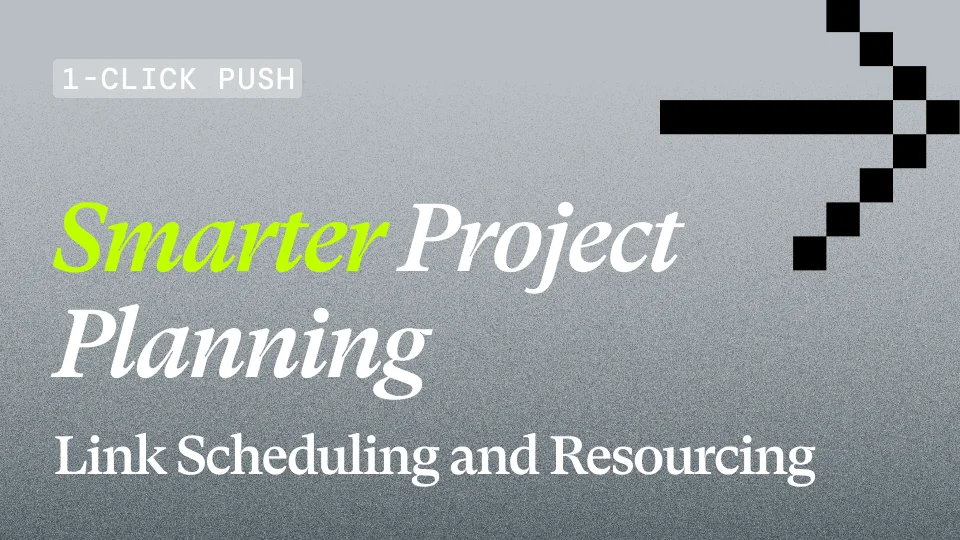Firefighting Again? 4 Pitfalls Fixed With Resource Management Software

If you run a growing consulting firm, you know the pattern. A client pulls a date forward, a senior consultant is out sick, two proposals land at once, and suddenly your day is spent putting out project resource management fires.
None of this happens because you don’t care or your team isn’t excellent. It happens because the project and resource management system underneath your delivery is running on spreadsheets, heroics, and hope.
You deserve a week that feels predictable. These are the 4 most common traps we see in project resource management, why they hurt, and 4 simple actions you can take tomorrow to start pulling your firm - and your day - out of the resourcing fire.
Pitfall 1: One Person Resourced On Too Many Projects
Why it keeps you firefighting: When a principal consultant or delivery lead holds the client relationships, decision-making, and delivery responsibility on an oversized piece of your project pipeline, any absence or overload becomes a firm-wide project and resource management emergency.
Quick fix: Run a one-hour “Single Point of Failure Sweep.” List every active project your overutilized A Players are on, then mark the one or two that would stall if that person disappeared for two weeks. If your resource management software allows for it (spoiler alert: Projectworks does) do a quick search for others with similar skills and future capacity, so you’ve got back-up resource should you need it. Pro tip: start with your highest revenue clients first.
Pitfall 2: Resource Management Based on Capacity, Not Skills
Why it keeps you firefighting: Projects land unexpectedly, your project resource management team scramble to staff them with whoever’s available - only to discover later their skills don’t map to the project. Work slows, seniors pick up slack at night, margins erode, and clients feel the wobble.
Quick fix: Build a live project and resource management doc that maps the skills and capacity of everyone in your team, and update it monthly based on new hires and past projects. Make sure it’s easily searchable, even if it’s just a simple spreadsheet. Or just upgrade to a resource planning tool that does it for you - Projectworks resource management software does.
Pitfall 3: No Early Warning System For Project and Resource Risk
Why it keeps you firefighting: A project date slips or scope creeps but your disconnected project and resource management systems don’t surface the risk with your deliver lead until it’s too late to act. Even a delay of a few days can turn a project risk into consulting firm fire.
Quick fix: Set up an automated weekly nudge asking every delivery lead to share their top three project risks - then reward them when they do ring the alarm bells. Automate a weekly timesheet reminder while you’re at it, so you can use accurate data to fix the problems when they surface. Even better - run all project and resource management through a project planning tool that sounds the alarm automatically, by surfacing burn, utilization, and forecast data in real-time.
Pitfall 4: Monthly Resource Planning for Weekly Project Work
Why it keeps you firefighting: Your resource management planning meetings are world-class, but they only happen once a month. A week later, delivery dates have moved, project scope has changed, and new work has been confirmed. The gap between your perfect project resource management plan and the messy reality forces last-minute reshuffles and weekend work.
Quick fix: Start a 30-minute resourcing management stand-up every Monday. Look six weeks ahead, update demand, confirm resourcing, and commit to the next two weeks. Track forecast vs actual utilization and budget burn, and update the numbers weekly based on last week’s timesheets. This low-fi approach to resource management planning reduces drama more than any quarterly review.
A modern resource management software will make planning even easier, bringing together timesheet data, project budgets, and work forecasts automatically.
You already have the people and the intent. A little structure in project and resource management goes a long way. If you want a faster path, moving these habits into a connected resource management software like Projectworks turns good intentions into everyday practice and gives you the visibility to make confident calls. Book a demo to find out how.
Related Articles

10 Field-Tested Utilization Fixes from Leaders Who’ve Lived It
Most firms treat utilization like a thermostat. Too cold, crank it up. Too hot, hope nobody burns out. The reality is messier. Hours leak in the handoffs, decisions drift, heroes hoard the hard work, and a quiet three-week gap nukes a quarter.

